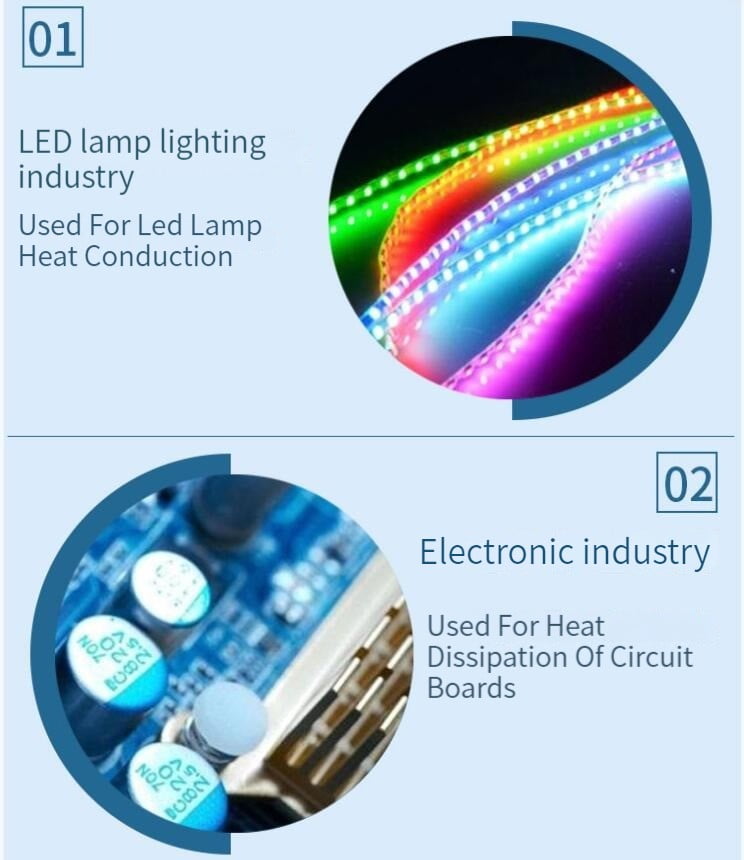LED lights have become an important part of our daily lives, from lighting up our homes to illuminating our streets. One of the key components in ensuring that LED lights operate efficiently is the use of thermal conductive tape. This tape, commonly known as thermal adhesive tape or thermal transfer tape, is used to attach the LED chip to the heat sink, which helps to dissipate heat generated by the LED.
Thermal conductivity, which is the ability of a substance to transfer heat, is an important factor in the performance of thermal conductive tape. The higher the thermal conductivity of the tape, the better it will be at transferring heat. In recent years, manufacturers have developed thermal conductive tapes with high thermal conductivity for use in LED lights. These tapes are made with different types of materials such as silicone, polyimide and acrylic, each with its own unique properties.
Silicone thermal conductive tape is the most commonly used type of thermal conductive tape for LED lights due to its high thermal conductivity and good adhesive properties. Silicones are known for their excellent ability to resist high temperatures, making them ideal for LED lights that generate a lot of heat. Additionally, silicone tapes are able to bond well with a wide range of surfaces, making them versatile and easy to use.
Polyimide thermal conductive tape is another type of tape that is commonly used in LED lights. This type of tape is known for its excellent thermal conductivity and flexibility. Polyimide tapes are able to withstand high temperatures, making them suitable for use in LED lights that generate a lot of heat. Additionally, their flexibility allows them to conform to different shapes and sizes, making them ideal for use in smaller and more intricate LED designs.
Acrylic thermal conductive tape has a lower thermal conductivity compared to silicone and polyimide tapes. However, it is still a popular choice for LED lights due to its affordability and ease of use. Acrylic tapes are able to bond well with a wide range of surfaces and are ideal for LED lights that do not generate a lot of heat.
When choosing a thermal conductive tape for LED lights, it is important to consider several factors such as the thermal conductivity of the tape, the temperature range it can withstand, and how well it will bond with the surface it is being applied to. It is also important to choose a tape that is appropriate for the specific LED light being used.
Overall, thermal conductive tape plays a critical role in the performance and longevity of LED lights. With the development of new materials and technology, manufacturers are constantly improving and innovating thermal conductive tapes to ensure that LED lights continue to operate efficiently and effectively.

